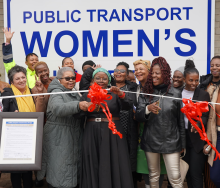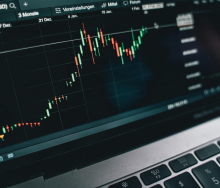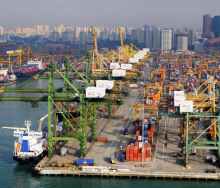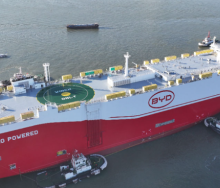Shipping lines’ spectacular results of the past few years are beginning their spectacular decline as market conditions begin to normalise.
Orient Overseas (International) Limited, parent company of OOCL, has announced a profit attributable to equity holders of $1 128.7 million for the six-month period ended June 30, compared to a profit of $5 663.6 million for the same period in 2022.
Earnings per ordinary share for the first half of 2023 were $1.71, compared to earnings per ordinary share for the first half of 2022 which were $8.58.
As was clearly to be expected, the extraordinary market conditions of the past two to three years have come to an end. The long, steady decline in freight rates, which began around the middle of last year, continued during the first half of 2023, according to a statement from the company.
“The fall from the great heights of 2020-2022 has certainly been spectacular in terms of both absolute dollar value and in terms of percentage, but this is simply a reflection of just how high the freight market had risen. At the time of writing, freight rates are, broadly speaking, around, and in some cases above, the levels they were pre-Covid before global reactions to the pandemic created the exceptional container shipping market conditions of the past few years.”
Those market conditions were a combination of better-than-expected demand and severe congestion around the network which placed massive downward pressure on the effective level of capacity available to shipping customers, notwithstanding the deployment of additional capacity by shipping companies.
Starting from mid-year 2022, and continuing throughout the reporting period, very different market forces have applied. First, congestion at existing chokepoints was alleviated, releasing additional effective supply into the market, with very little material new disruption occurring. Second, in a number of key importing economies, inventory levels had risen, not to historical highs, but certainly to levels higher than seen in the prior two to three years. This caused importers in the US and Australia, for example, to take a more cautious approach in their ordering of new goods, thereby reducing the demand for container shipping, the statement points out.
As a result, compared to the same period in 2022, OOCL’s total liner liftings for the first half of 2023 reduced by 1%, and total revenue decreased by 60%, resulting in a 60% decrease in revenue per TEU.
The average price of bunkers recorded by OOCL in the first half of the year was $609 per ton, compared to $729 for the corresponding period in 2022. The total bunker cost decreased by 17% in the first half of 2023 compared to the corresponding period in 2022, even though the consumption of bunkers was nearly the same in both periods.
Looking ahead, challenges are expected continue.
“Certainly, the market is very far from being in disaster territory, and of course, there are some indications that demand is improving and that shipping companies are behaving rationally in the face of fluctuating demand - all of which is reassuring. However, undeniably, there are risks associated with the impact of inflation and higher interest rates on consumer spending, and from the unclear economic outlook. There is also the uncertainty of not knowing exactly what the net fleet growth, in terms of effective capacity, will be in the coming months and years. No one can predict with accuracy the extent to which, in any given period, capacity from new deliveries will outpace the loss of capacity driven by scrapping and speed reductions, whether for CII/EEXI compliance or simply for cost reasons.”













